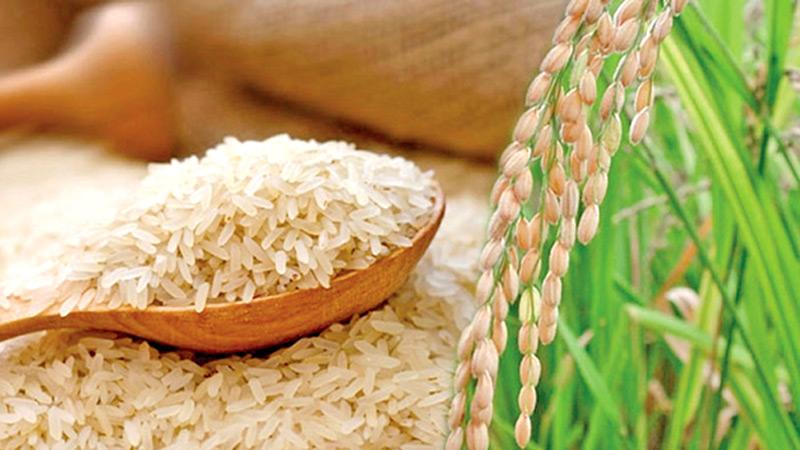
While the Government made an effort to save the consumers and farmers without affecting the distribution, from yesterday, the Consumer Affairs Authority began raids on rice traders to check if they comply with the new controlled price regime announced by the State recently.
The Government revised the fixed prices of three varieties of rice, Keeri Samba, Samba and Nadu, on three occasions mainly to protect the consumers affected by Covid-19 related issues. As of now, the prices remain at Rs.120 for Keeri Samba, Rs. 98 for samba and Rs.96 for Nadu.
The latest price revision came after the Government took into consideration the rice mill owners’ woes and expert advice as well as the farmers’ and the consumers’ complaints.
Former Mahaweli State Minister, Roshan Ranasinghe, told the media recently that the Government should have the interest of the masses when deciding on a fixed price for rice, adding that large scale owners of the rice mills monopolise the market for their gain.
Ranasinghe said he had proposed to the Government to take action to put an end to the country’s rice monopoly and to restore the operations of small and medium-sized rice mills.
“I have requested the President to set up three rice mills run by the State. Also, small and medium scale rice mills need to be uplifted.
However, the number one priority is to eliminate the rice and paddy monopoly in the country” he added.
Rice mafia, no more
Meanwhile, at a press conference last week, leader of the Pivithuru Hela Urumaya, Udaya Gammanpila, said that the rice mill mafia had only existed during the last government.
“There is no such thing as a rice mafia today. Sathosa is buying paddy from farmers, assisted by the Paddy Marketing Board. The military is now managing the stock. Mill owners who have created a scarcity in the rice market have now lost the opportunity to increase their prices,” he added. Until May this year, rice producers had purchased a kilo of paddy at Rs. 50 and it was subjected to the Government’s maximum retail price of Rs. 98 per kilo of rice. But in a recent gazette notification, the Government reduced a kilo of nadu rice from Rs. 98 to Rs.90, which ultimately created a scarcity in the market since the mill owners refused to release rice at the controlled price.
The new gazette notification has been issued based on the profit earned by the rice producers in the absence of a controlled price.
However, as there was no rice in the retail outlets under the controlled price, officials of the Consumer Affairs Authority (CAA) visited major rice mill operators in Polonnaruwa recently. Their visit to famous rice mill operator, Dudley Sirisena, brother of former President Maithripala Sirisena was made public via social media. Sirisena’s rice factory was inspected by officers of the CAA headed by its chief, Major General (Rtd) Shantha Dissanayake on May 23. During this tour, Sirisena stressed that they cannot sell rice at the price set by the Government due to the ‘substantial losses’ that it would create.
“Instead of selling rice at the controlled price, I am ready to go to jail” Dudley Sirisena, the owner of Araliya Mills told CAA officers.
Settlement
In this backdrop, President Gotabaya Rajapaksa met large scale rice mills operators last Wednesday in Colombo, reaching a settlement to release rice to the market under newly introduced controlled prices. Following this meeting, the rice mill operators agreed to release Nadu at Rs. 96 per kilo and Samba at Rs. 98 per kilo to the market.
The maximum retail price of Kekulu and Keeri samba will be Rs. 93 and Rs. 120.
Even though a settlement was finally reached and rice stocks are back in the market, in situations like these in the past, it was evident that the State mechanism is incapable of controlling the price of rice. As experts have opined on many occasions keeping enough rice and paddy stocks with the Paddy Marketing Board is a viable solution to control the market price for rice. Currently, the Army is deployed in the paddy purchasing of the Paddy Marketing Board and athe Consumer Affairs Authority is headed by an ex-Army officer. Therefore, this may be an opportunity for the country to re-look into the entire market behaviour and take strong decisions for the betterment of the public.
There are a few things to consider when it comes to the price of rice. It is the staple food in Sri Lanka. Hence, there should be a mechanism to buy rice without any inconvenience to the public.
In other words, rice has to be an abundant food item at an affordable price. Also, it is not the intermediary, the processer or the trader but the farmer who should always receive the lion’s share of the profit. However, the rice trader also deserves a reasonable profit. There are hundreds of thousands of people who earn their livelihood by contributing to rice production. Especially, as our state mechanism is not strong enough to be involved in rice production, a high-level contribution from the private sector is vital.
As a short term strategy introducing a fair mechanism to monitor and execute decisions from the cultivation to products entering the market is necessary. It is important to look for the problem, intervene to solve it and then to follow-up.
Appropriate solutions should be implemented by looking at all stakeholders from time to time. In conclusion, the rice market is not just a matter of controlling prices.
